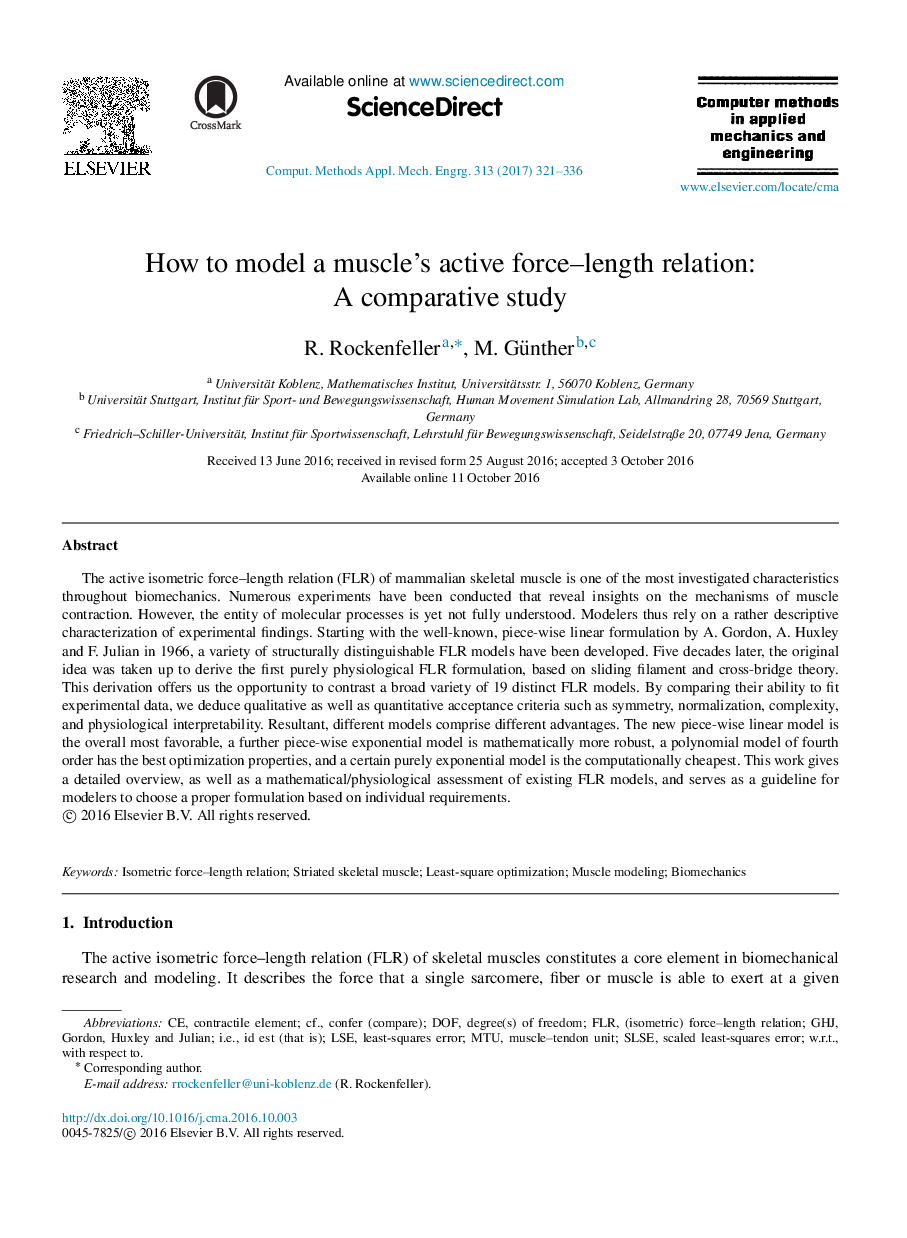| Article ID | Journal | Published Year | Pages | File Type |
|---|---|---|---|---|
| 4963918 | Computer Methods in Applied Mechanics and Engineering | 2017 | 16 Pages |
Abstract
The active isometric force-length relation (FLR) of mammalian skeletal muscle is one of the most investigated characteristics throughout biomechanics. Numerous experiments have been conducted that reveal insights on the mechanisms of muscle contraction. However, the entity of molecular processes is yet not fully understood. Modelers thus rely on a rather descriptive characterization of experimental findings. Starting with the well-known, piece-wise linear formulation by A. Gordon, A. Huxley and F. Julian in 1966, a variety of structurally distinguishable FLR models have been developed. Five decades later, the original idea was taken up to derive the first purely physiological FLR formulation, based on sliding filament and cross-bridge theory. This derivation offers us the opportunity to contrast a broad variety of 19 distinct FLR models. By comparing their ability to fit experimental data, we deduce qualitative as well as quantitative acceptance criteria such as symmetry, normalization, complexity, and physiological interpretability. Resultant, different models comprise different advantages. The new piece-wise linear model is the overall most favorable, a further piece-wise exponential model is mathematically more robust, a polynomial model of fourth order has the best optimization properties, and a certain purely exponential model is the computationally cheapest. This work gives a detailed overview, as well as a mathematical/physiological assessment of existing FLR models, and serves as a guideline for modelers to choose a proper formulation based on individual requirements.
Related Topics
Physical Sciences and Engineering
Computer Science
Computer Science Applications
Authors
R. Rockenfeller, M. Günther,
